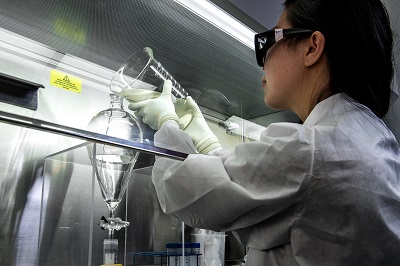To apply for D-class medical device registration with the Health Sciences Authority (HSA) in Singapore, the device must meet certain conditions and regulatory requirements. D-class devices are classified as high-risk medical devices, so they are subject to stricter scrutiny and must meet comprehensive safety and efficacy standards.
Conditions to Apply for D-Class Medical Device Registration in Singapore HSA
Device Classification
- The device must be classified as D-class under the Singapore Medical Device Classification Rules. D-class devices are typically high-risk medical devices that are critical to patient health, such as implantable devices or devices intended to sustain or support life.
- Classification Criteria: The classification is based on the intended purpose, duration of use, invasiveness, and other factors such as potential for harm. D-class devices require more extensive evidence of safety and efficacy due to the higher risks they pose.
Compliance with Regulatory Standards
- The device must comply with international regulatory standards such as:
- ISO 13485 (Quality Management System for medical devices)
- ISO 14971 (Risk management for medical devices)
- Good Manufacturing Practices (GMP) or equivalent standards (for manufacturing)
- The manufacturer (or its Authorized Representative, if foreign) must demonstrate adherence to these quality standards in the device development, manufacturing, and post-market phases.
- The device must comply with international regulatory standards such as:
Clinical Evidence
- D-class devices require substantial clinical data demonstrating the device’s safety, effectiveness, and performance for its intended use.
- This can include results from clinical trials or data from similar devices if clinical trials are not conducted for the device.
- Clinical Evaluation Report (CER): A detailed report summarizing the clinical data and justifying the device's safety and efficacy.
- D-class devices require substantial clinical data demonstrating the device’s safety, effectiveness, and performance for its intended use.
Risk Management
- The device must have undergone a risk management process in line with ISO 14971 standards.
- Risk Analysis: The device should have a comprehensive risk analysis report identifying potential hazards and outlining the methods to mitigate these risks.
- Risk Control Measures: The manufacturer must have implemented measures to minimize any identified risks to patients or users.
- The device must have undergone a risk management process in line with ISO 14971 standards.
Good Manufacturing Practice (GMP) Compliance
- The manufacturing facility of the device must comply with Good Manufacturing Practices (GMP) or an equivalent standard. This ensures that the device is manufactured in a controlled and safe environment.
- ISO 13485 Certification: The manufacturer must be certified under ISO 13485 or another recognized Quality Management System (QMS).
Local Authorized Representative (AR)
- Foreign Manufacturers: If the manufacturer is based outside Singapore, they must appoint a Local Authorized Representative (AR) in Singapore.
- The AR will be responsible for submitting the registration application on behalf of the manufacturer and for communication with HSA during the registration process.
- The AR must submit a Letter of Appointment along with the registration application.
- Foreign Manufacturers: If the manufacturer is based outside Singapore, they must appoint a Local Authorized Representative (AR) in Singapore.
Device Labeling and Instructions for Use (IFU)
- The device must meet labeling requirements established by HSA, including:
- Product name and description.
- Manufacturer's contact information.
- Intended use, contraindications, and warnings.
- Storage instructions and expiry date (if applicable).
- The Instructions for Use (IFU) must be comprehensive, clear, and available in English, detailing how to use the device, any warnings, contraindications, and maintenance instructions.
- The device must meet labeling requirements established by HSA, including:
Post-Market Surveillance Plan
- The manufacturer (or AR) must have a post-market surveillance plan in place to monitor the device's performance once it is on the market.
- This includes procedures for reporting adverse events, conducting recalls, and monitoring the safety and efficacy of the device throughout its lifecycle.
- The manufacturer (or AR) must have a post-market surveillance plan in place to monitor the device's performance once it is on the market.
Payment of Registration Fees
- The applicant must pay the registration fee to HSA when submitting the application. For D-class devices, the fee is approximately SGD 1,070. This fee covers the review and processing of the registration application.
Regulatory Compliance and Documentation
- The manufacturer or AR must provide all the required documents in the correct format and in compliance with HSA's regulations. This includes:
- Device description, clinical data, and clinical evaluation report.
- Risk management documents (risk analysis, mitigation plans).
- Manufacturing information and GMP compliance.
- ISO 13485 certification.
- Device labeling and IFU.
- Payment receipt for registration fees.
- The manufacturer or AR must provide all the required documents in the correct format and in compliance with HSA's regulations. This includes:
Summary of Conditions for D-Class Medical Device Registration
- The device must be classified as a D-class medical device.
- The manufacturer must comply with ISO 13485 and ISO 14971 standards.
- Clinical data and a clinical evaluation report must be provided to demonstrate the device’s safety and efficacy.
- The device must undergo a risk management process to mitigate risks.
- The manufacturing facility must comply with GMP or equivalent standards.
- A Local Authorized Representative (AR) is required if the manufacturer is based outside Singapore.
- The device must meet labeling and IFU requirements.
- A post-market surveillance plan must be in place.
- The registration fee must be paid.
- All required documents must be submitted in the correct format via the MEDICS portal.
By meeting these conditions, manufacturers can apply for D-class medical device registration with HSA in Singapore and ensure their device is in compliance with local regulations.

Whatsapp or Wechat:+86 15816864648;email address:hito.lin@grzan.cn
.png)
.jpg)
.png)

.png)